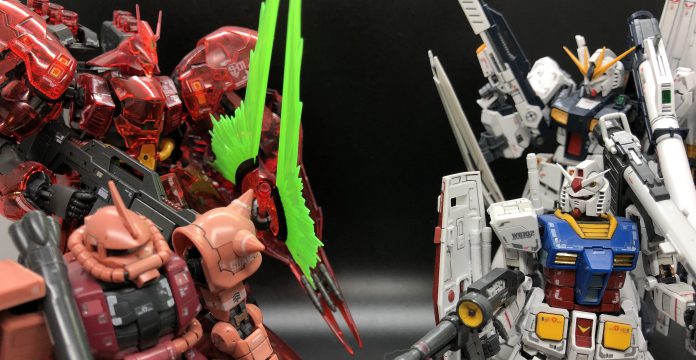In a new Bit we’re exploring here on Goonhammer, we’re branching out to cover something that has nothing to do with games or dice: Gundam plastic model kits. If you’re not a big old anime fan, we’re starting with an exploration of what a Gundam is, and what a GunPla is.
A Gundam is just a sixty foot tall master chief. Wait, that’s not right.
Gundam as a show is dumber than Evangelion but not as dumb as Macross. That’s closer.
Fundamentally, Mobile Suit Gundam is about giving young people rocket launchers and sending them off to die in space. There we go.
So, just to start this off on the wrong foot, we are going to be talking about anime. That’s not really what this column is for – it’s supposed to be about plastic model kits – but they’re based on anime, and so with anime we begin. For our American audience, if you’re familiar with this franchise, it’s likely through either Cartoon Network showing Gundam Wing in the late 90s, or the constant calls for various political figures to be given a Gundam.
There’s no real way to explain this in fewer than one million words, but what matters for our purposes is that, over the years, there have been literally hundreds of cool mechs blowing each other up on TV. It’s a toy commercial. Literally: Sunrise, who produce the shows, are wholly-owned by Bandai, who produce the toys. But it’s a good toy commercial.
Gundam lodged itself into my brain at a relatively early age, much like Warhammer and probably for some of the same reasons. The aesthetic, for one: robot cool. But even – especially – without knowing the context, just seeing a phrase like “newtype-use heavy assault mobile suit” carries a certain amount of power with it. I’d see that on the box, one line of English surrounded by Japanese text and colorful explosions, and I had to know more. Who were these people, and why were they fighting? What the hell is a GM Command Colony Type? There was a question there, and I needed to know the answer, so I went down the rabbit hole. It’s a feeling I’ve only had a few times in life, diving deep into a fully-realized fictional world that was brand new and unspoiled, lying in wait for me to lose myself in it. The others? Playing the first Mass Effect, and the first Warhammer books I remember reading, Codex: Eye of Terror, and Codex: Armageddon.
I’m not Japanese or 60 years old, so I won’t pretend to understand the full impact that Gundam as a franchise has conveyed over the last 40 years, but my outsider’s understanding is that it occupies a space roughly equivalent to Star Trek or Star Wars. A science-fiction franchise that has stuck it out for 40 years, hanging around the periphery of pop culture while intermittently breaking through to the mainstream. Maybe closer to Trek, just on sheer volume of material.
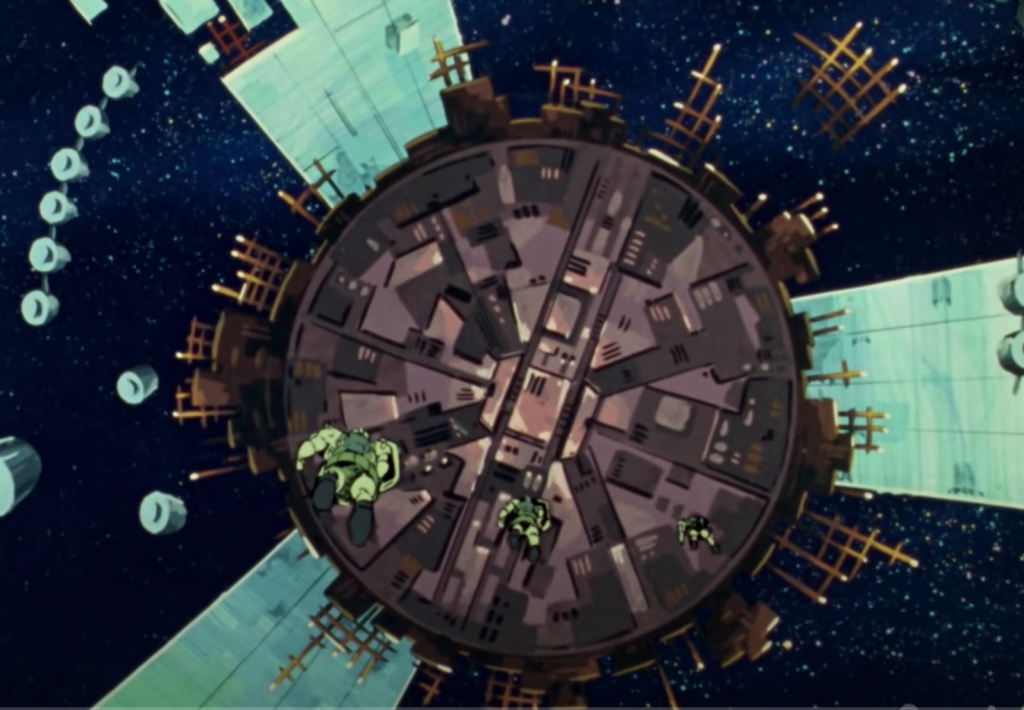
The first entry in the canon, 1979’s Mobile Suit Gundam, introduced the core identity that the franchise still holds. A mix of hard sci-fi (the space colonies, geopolitical situation, and most of the non-giant-robot technologies are at least somewhat realistic) and things taken from the anime bits box (costumes are goofy as hell, everyone is unnervingly young). It’s still objectively absurd, and while I wouldn’t call it “realistic”, at least the logic of the setting is internally consistent.
What Gundam emphasized was the importance of “characterization” and “pathos” to the giant robot formula, along with a reduction of superhero mechs to military weapons – the pilots are regular soldiers who get slapped for disobeying orders, the machines suffer visible wear and go down for maintenance, and most of the battles end with tactical retreats, rather than fighting to annihilation. That all seems pretty rote these days, but by the standards of the day it was revolutionary. I’m not going to claim that it’s a realistic gritty war drama, but they do talk about supply chains more than you might expect. There’s also a fair bit of crying, if that’s your thing.
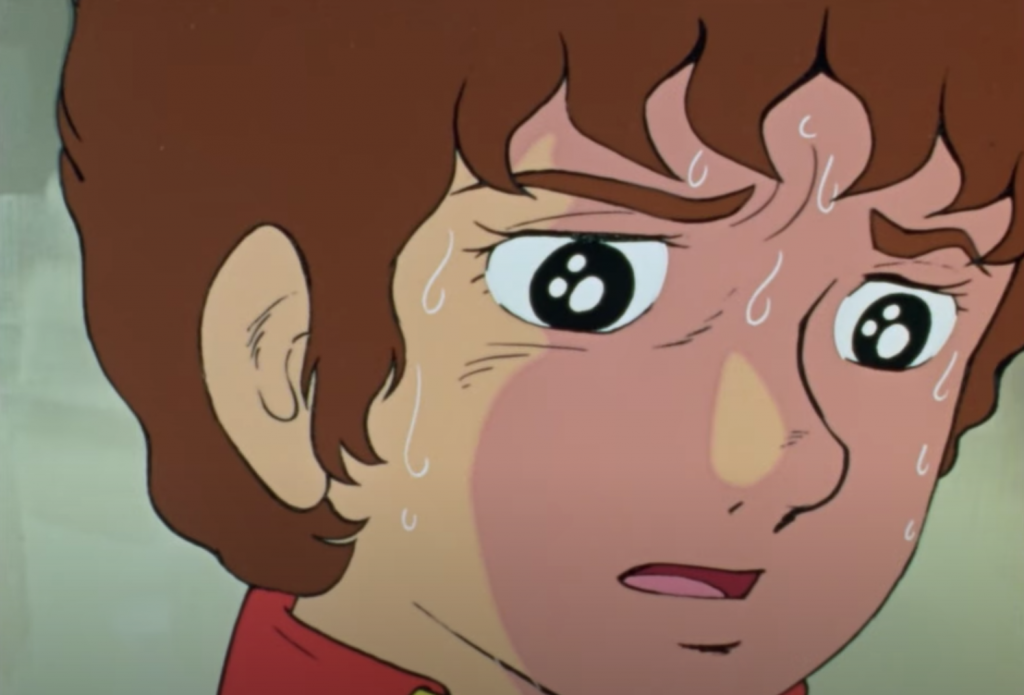
The action takes place in a timeline called the Universal Century, and it is the most horrible place to live this side of Warhammer 40,000. It’s somewhere in the mid-future, more advanced than The Expanse but not as far as Star Wars. There are giant self-sufficient space colonies, but no artificial gravity that isn’t caused by rotating, and no faster-than-light travel or aliens. Most of the shows and movies are set between the years 0079 and 0105 or so, and in that 25-year span the Earth is constantly getting huge stuff de-orbited into it. Half the human race is dead before the first entry in the timeline even starts, and massive wars happen every 3-5 years thereafter. It sucks ass. Lest you think this is all too serious, there’s also a basketball-shaped robot that screams.
We start, as in all giant robot fantasy stories, with a philosopher. A guy named Zeon Deikun declares that spacenoids, being a new race of humanity born and raised in space, should be independent from the Earth’s government. This doesn’t go over super well, which leads his adherents to develop giant robots and strap bazookas and swords to them.
The politics of Gundam usually pit earth-based elites against groups of Deikun’s rebellious space doofuses calling themselves some variation of the Principality of Zeon. Depending on the series and how tilted the writer is, Zeon is either a well-funded tyrannical separatist government, a legitimate de-colonization movement, or an insane terrorist cell. For their part, the Earth Federation typically lands somewhere between ineffectual liberal democracy and naked fascism. Just to be clear, there are still very clearly good guys and bad guys here – only one side openly commits repeated nuclear purges and environmental holocausts – but there are enough shifting loyalties and awful people on both sides that the morality isn’t quite black and white.
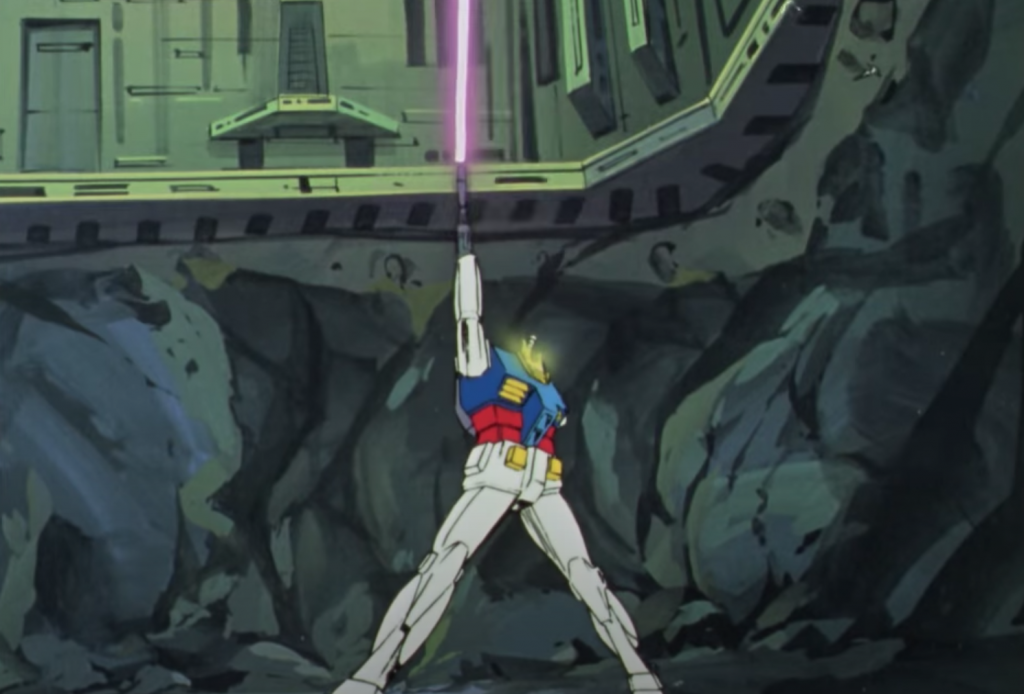
Things pop off in UC0079 with the One Year War, an event that goes poorly for all parties involved and is either the ultimate or proximate cause of all the following wars. The One Year War itself is an analogue to World War 2, with Zeon representing the Axis (to the point that they literally have a base called Axis, and at one point try to create a Co-Prosperity Sphere) and jumping out to an early lead due to their subject matter expertise in convoluted mass-murder schemes and giant robots that kick tanks around like children’s toys. They need to be slowly and carefully shoved back into their crate by the Earth Federation, who play the part of the Allies, and don’t come out of this smelling like roses either.
This is, finally, where the titular Gundam comes in. Formally known as the RX-78-2, this is the Federation’s first Mobile Suit. It’s a bonkers prototype unit, built like a brick shithouse and able to one-shot anything it hits. The pilot, a nervous kid by the name of Amuro Ray, hijacks the Gundam and its manual (it cannot be stressed enough how Incredibly Gundam of a move this is, having the protagonist slowly figure out how to work the thing by just reading the instructions) and proceeds to learn on the fly while butchering like two hundred Zeon dudes and becoming a war hero.
A sad punk in a robot will get you most of the way there, but here we return to Zeon’s philosophizing, and his prediction of the emergence of Newtypes. An evolution of humanity caused by living in space, Newtypes – if they existed, which they didn’t when Zeon came up with the idea – were posited to have faster reflexes, better spatial recognition, and total empathy. Mostly this manifests as being able to see the ghosts of people you’ve murdered, and using your brain to control various types of hovering laser guns, which makes Newtypes very good at battling but they hate it the entire time. The idea of humanity getting over itself and evolving into something greater, together, even though we squander our chances time and time again, is what passes for “optimism” with Gundam.
What to watch: The 3 Mobile Suit Gundam movies still hold up, and are a quicker watch than the original 43-episode series they’re compiled from. It’s hard to recommend starting with any of the immediate follow-ups – Zeta, Double Zeta, and Char’s Counterattack – because they follow each other pretty linearly and won’t make a ton of sense without either watching them all in order or spending some time on the Gundam wiki. If you want something more modern, Thunderbolt (exceedingly grim) or The 08th MS Team (which has a Grunts Dying Alone In The Jungle vibe) are good starting points. Gundam Unicorn whips, with solid animation and a great soundtrack, but is steeped in so much UC background that it might not land the same way without seeing a few other shows first.
Alternate Timelines
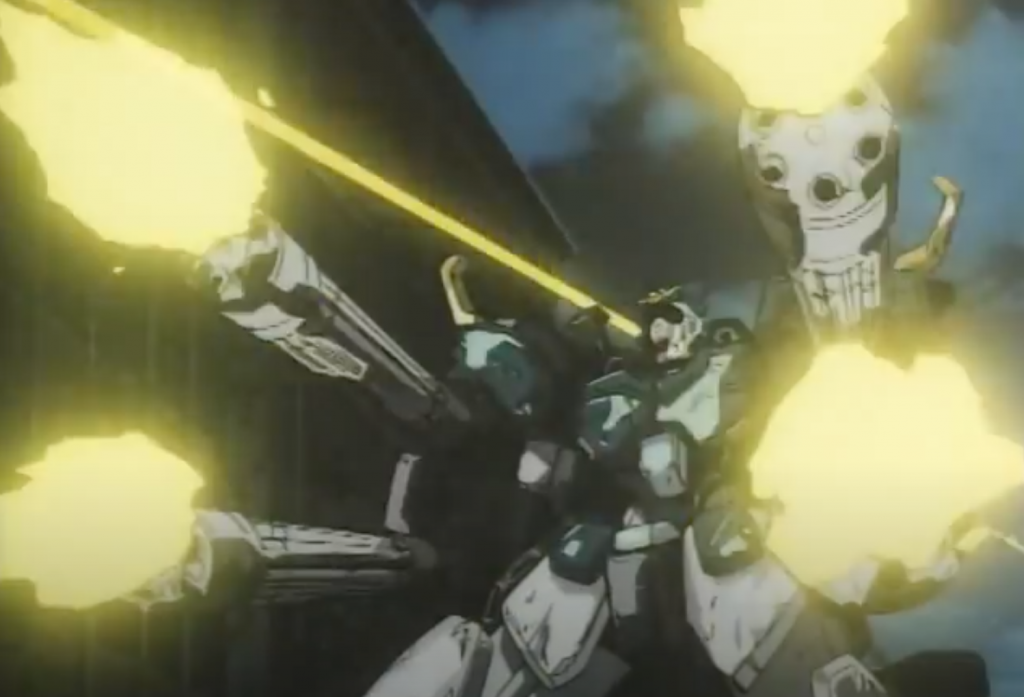
For the average millennial outside of Japan, your introduction to Gundam was probably not actually the Universal Century. It was likely the same as mine: Gundam Wing airing on Toonami right next to Dragonball Z, in the coveted “after school let out but before your parents came home from work” timeslot. Wing created one of the first alternate universes of the franchise, but there are a ton of them now. These aren’t reboots, but they aren’t totally unrelated either – the stories tend to hit the same beats, and include the same tropes. Think of comic books and their various TV/movie adaptations, though with fewer crossovers.
Wing is completely batshit, in incredible ways (a robot that shows you how you’re going to die, a child screams at wolves), but it pales in comparison to the weirdest thing Gundam has ever produced. Mobile Fighter G Gundam takes the Gundam aesthetic and applies it to Street Fighter by way of Robot Jox. Everyone has moved to outer space, and leadership of the solar system is settled by every country/colony sending a Gundam to earth, where they do karate moves on each other until only one remains. Because it was the 90s, the robots are all incredibly questionable national stereotypes. Neo-Mexico sends the Tequila Gundam, which has a spiked cactus arm (if you buy the series on Blu-Ray, which Condit did, it comes with a Tequila Gundam shot glass). Neo-America’s Gundam Maxter wears football pads and its weapon is a gigantic cowboy six-shooter. Neo-Holland builds a robot that disguises itself as a Windmill. It is all so, so, stupid, and it kicks so very much ass.
Aside from G Gundam – which, again, rules – the AUs are mostly by-the-numbers retellings of various parts of the UC timeline. The mech designs change, some of them more than others, but there are usually weeping children forced to kill, a sympathetic masked antagonist, and earthlings either fighting for their lives against, or brutally oppressing, people from outer space.
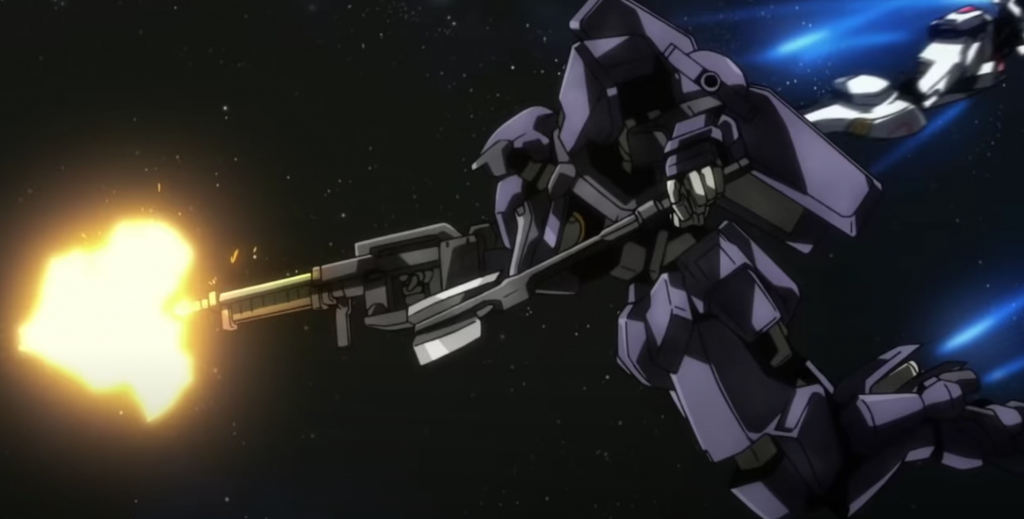
What to watch: If you haven’t seen it already, Wing didn’t age great. Iron Blooded Orphans has a more industrial look to the mechs, visceral melee combat, and seeks to answer the question of exactly how cool being a child soldier is (very, at first, though with diminishing returns). Past that, maybe 00, but unless you’re hard up you can skip Seed and especially don’t watch AGE.
Why are you doing this to me, the Warhammer enthusiast?
I don’t think I’m the only one in this hobby that either has Gundam Brain or would be receptive to this particular flavor of intrusive thought.
I mentioned The Expanse 5000 words ago, and there’s some of the same appeal as that series. The tension between inner planets and outer colonies over self-determination, the resource contention, and the incessant war crimes, all make for interesting stories. The multiple serieses do tend to be a little formulaic, but that’s not to say it’s all predictable. At Gundam’s best, the plots are twisting, the mechs are doing cool mech stuff, the visuals are exciting, and the characters are present.
In the end, I just think it’s neat, but the main thing it is, is a toy commercial, and the toys are very cool: palm-sized fully-articulated robots that don’t need paint or glue. It’s not the same kind of hobby as Warhammer, but as a palette cleanser, or if you want to try something new, it’s right next door.
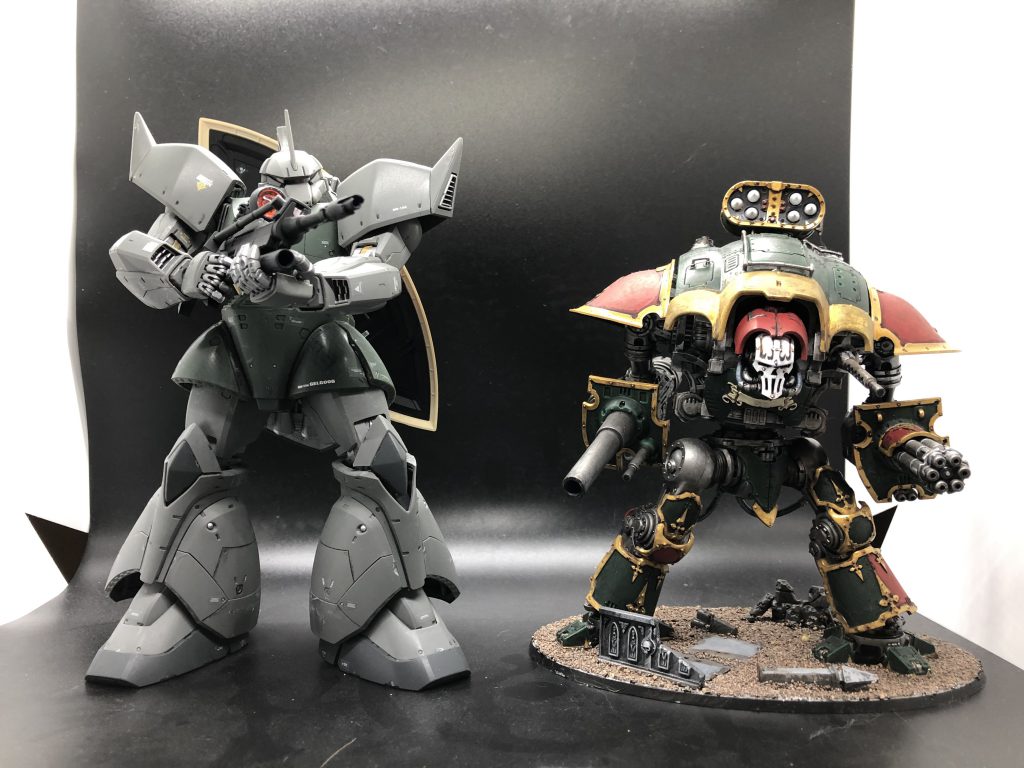
This is a long enough post as-is, so we’ll be back next time with a run-down of what we’re actually here for, something more on-brand for Goonhammer: plastic model kits. I’ll attempt to explain what the letters and numbers on the boxes mean, and which ones are weeb trash as opposed to straight-up trash, plus address the inevitable comparisons between Bandai and Games Workshop.
See you, space cowboy. Wait, crap, that’s the wrong show. Please email contact@goonhammer.com, or reply in the comments, if you want us to stop.
